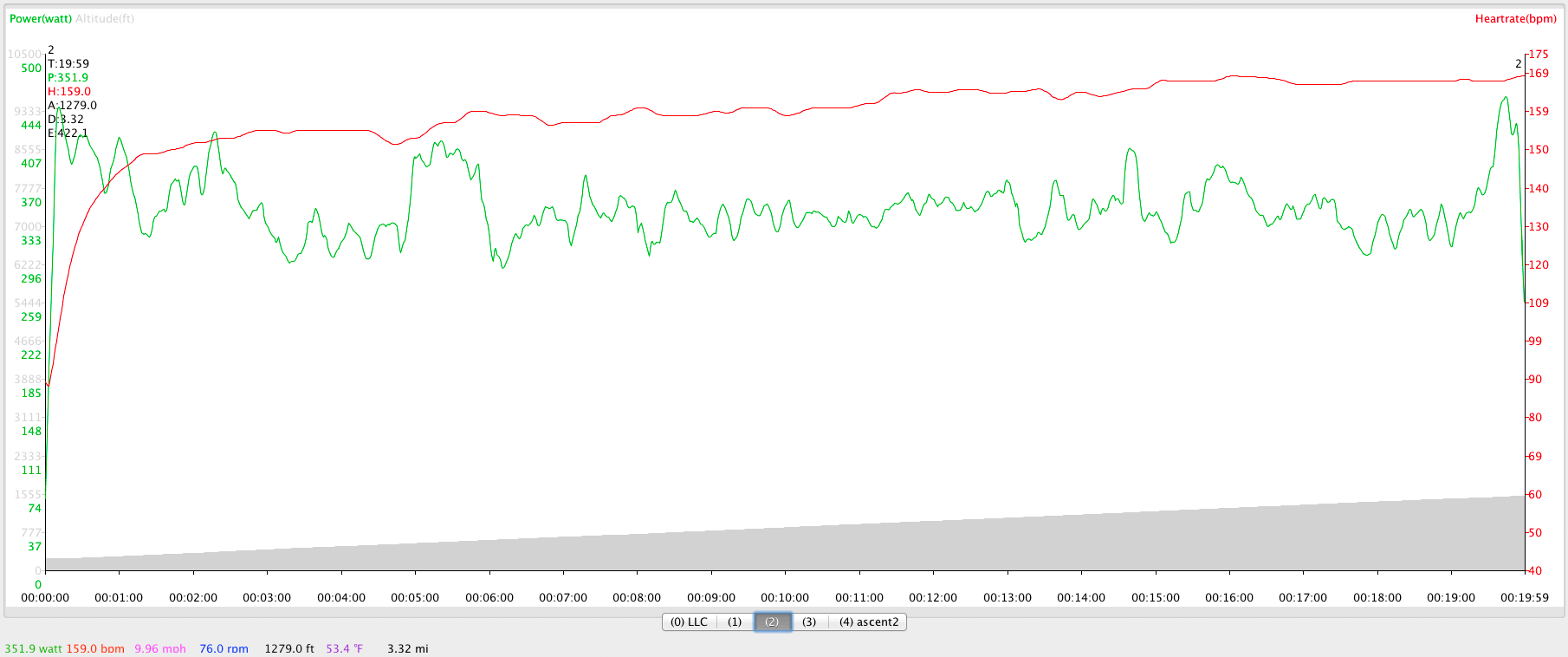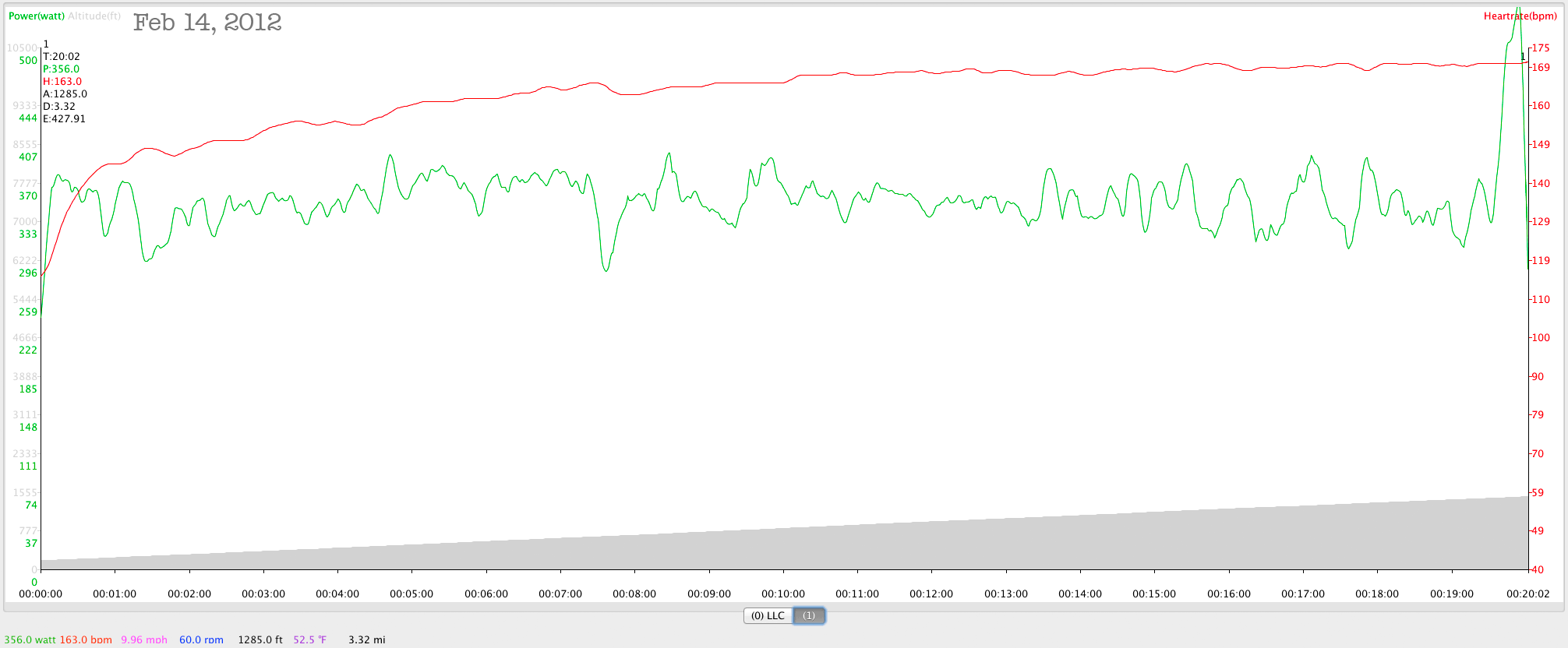Case Study: Limitations of Predicting Ascent Time

See the prior page for a study comparing and predicting ascent times.
Ascent time on a moderate to steep grade at relatively low speeds can be predicted based on watts and weight, but such predictions are subject to measurement error of both watts and weight..
Shown further below are two graphs for two near-maximal efforts on Old La Honda Road, three days apart in Feb 2012.
Predicting ascent time with watts and weight
Compared to the Feb 11 ascent, the Feb 14 ascent was 3 seconds slower (20:02 vs 19:59), TRW* was 0.4 pounds heavier (best estimate based on weight when done), and wattage was up by 4.1 watts.
Feb 11: 19:59 — 351.9 watts @ 159 bpm, TRW of 203.8 pounds
Feb 14: 20:02 — 356.0 watts @ 163 bpm, TRW of 203.4 pounds
*TRW = Total Riding Weight, estimated from post-ride weight
This shows the limits of accuracy: with a bit lighter weight and a bit higher power, the Feb 14 time should have been faster by about 19 seconds as in:
1199 * (351.9/356.0) * 203.4/203.8 = 1183 seconds = 19:43 predicted time
(actual time 20:02)
However, weight here is a best estimate based on TRW when done riding (an hour or more later). Also, the SRM power meter is specified at 2% accuracy, and so the SRM accuracy gives us a potential error of 24 seconds on a 20-minute ascent (1200 seconds * 2%).
It would be interesting to analyze multiple consecutive ascents, but to do so accurately would require TRW for each ascent, and that’s hard to come by out on the bike.
Analyzing 1st vs 2nd half of the Feb 14 ascent
For the first half, I felt sure that I was performing 10-20 watts higher than Feb 11, this this was false (felt good though!). Equally false was the feeling that my wattage was dropping in the 2nd half— it didn’t.
Checking the data— for the first half of the ascent, wattage averaged 355.8 watts at 157 bpm. For the 2nd half of the ascent, wattage averaged 355.8 watts at 169 bpm.
Amazing— identical wattage both halves, though it definitely felt harder the 2nd half, and the feeling of subjective difficulty correlated strongly with the 12 beat higher heart rate, possibly suggesting that certain energy systems were now depleted, and the heart was having to work harder to compensate in order to recruit other energy systems (?).
I don’t get muscle “burn” until I hit 500+ watts, so except for the last 20 seconds, there was no feeling of muscle burn (lactate). Rather, I just get a deadened feeling in my legs about half-way up, which is no doubt is lactate induced.
Click for larger graphs.




